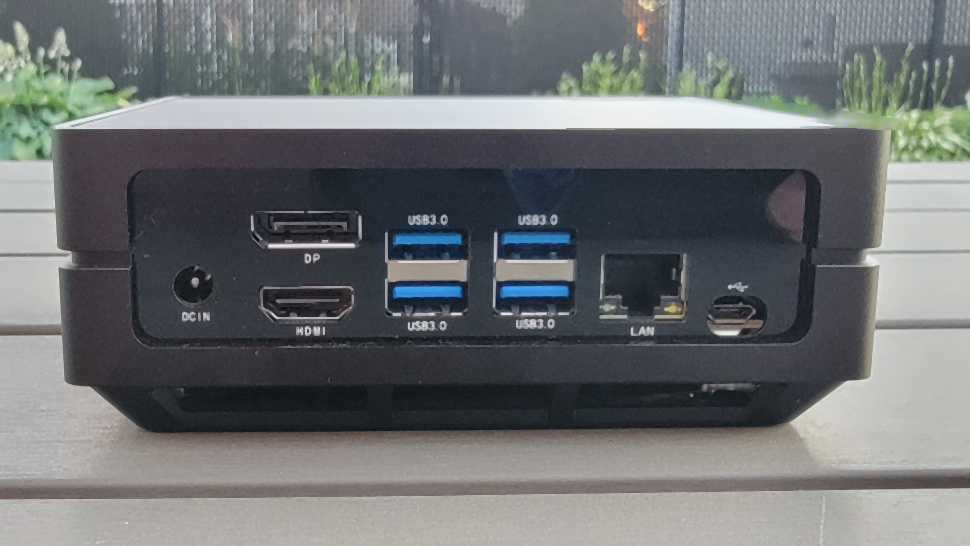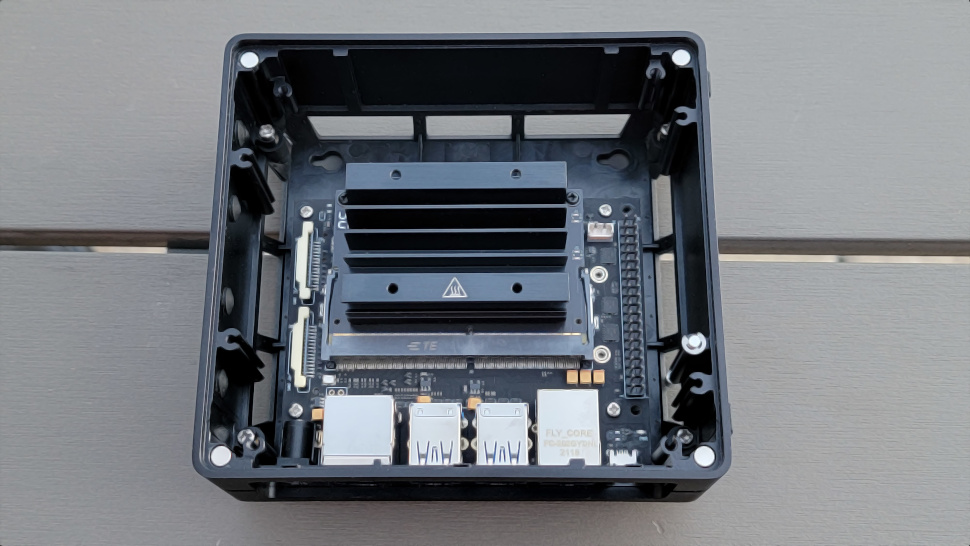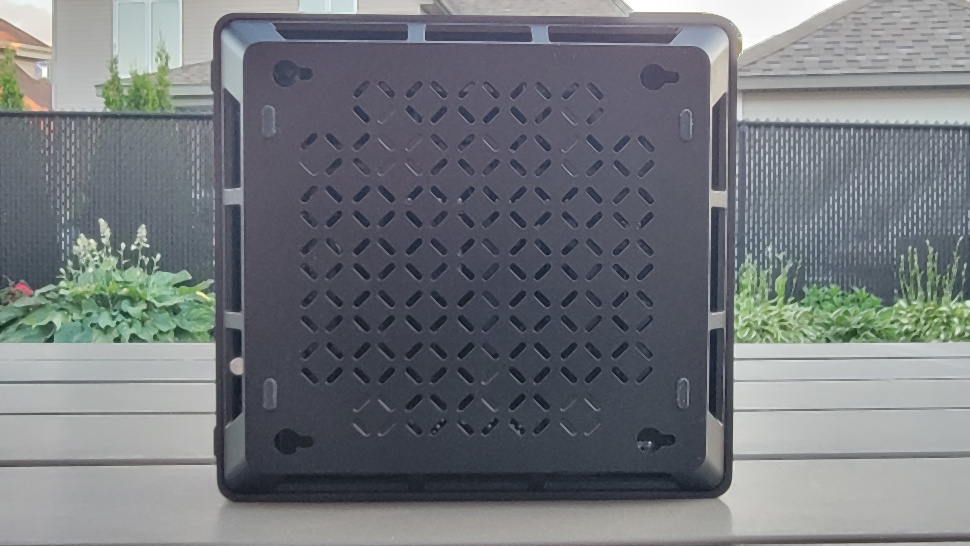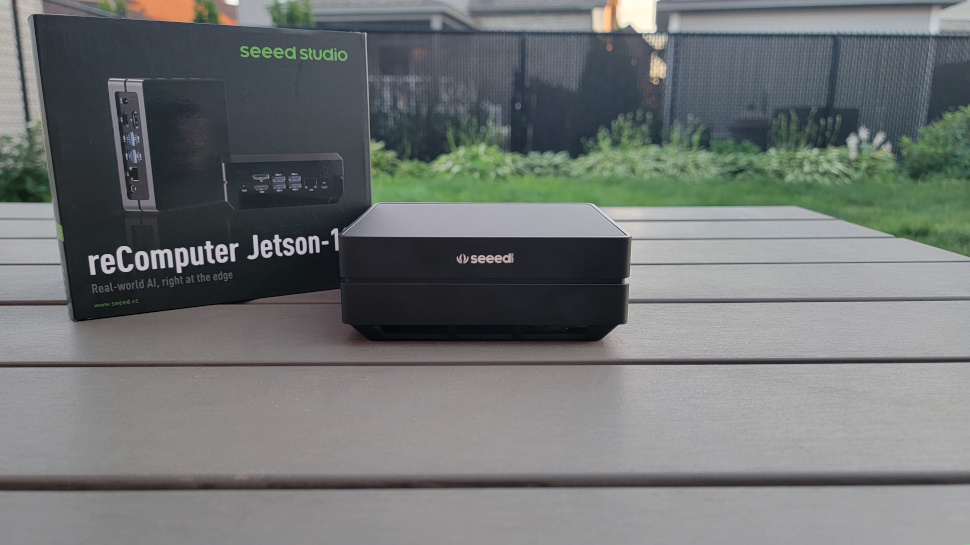TechRadar Verdict
The Seeed Studio J1020 is a small but powerful unit with enough processing power to solve tough AI tasks. It also serves well as a basic desktop replacement with its 4GB/16GB configuration and low-power usage.
Pros
- +
Small
- +
Low power
- +
Lots of communication interfaces
- +
Passive cooling
Cons
- -
Dated GPU architecture
- -
USB3 ports behind a hub
- -
Price
- -
No WiFi
Why you can trust TechRadar
Jump start your machine learning development with the new AI platform from Seeed Studio. The J1020 is a self-contained Linux box that integrates a 128-core GPU with extremely low power consumption. It surpasses a general-purpose CPU for tasks that require learning new datasets and detecting or reporting features or outliers from a data stream.
What’s even more impressive is that the platform supports a plethora of communication interfaces that are the bread and butter in the embedded world. You will get a couple of SPI, I2C, UARTs, and I2S buses as well as high-speed camera interfaces that support 4K. Along with a powerful Quad-core ARM A57 processor, 4GB of RAM, and 16GB of eMMC, it is a great proposition for embedded projects requiring a touch of AI or ML.
Seeed Studio J1020: Price and availability
The Seeed Studio reComputer J1020 is available in different flavors ranging from the entry-level with 4GB and SD card to the high-end with 16GB of both RAM and non-volatile eMMC memory. The processor is a Quad-core ARM with an NVIDIA Maxwell GPU for the low-tier systems and a Hexa-core ARM with an NVIDIA Xavier GPU for the pricier models. The price ranges from $199 to $699.

Seeed Studio J1020: Design
The Seeed Studio J1020 computer is shipped in a small box containing a universal 12V 24W power adapter. The heatsink, Jetson Nano module, and carrier board are all mounted in a black aluminum case. The unit measures 13cm x 12cm x 5cm and weighs 405g. The top acrylic cover is secured by four magnets and can easily be removed by pushing on a release pin located on the bottom.
Rubber pads located on the bottom and left side allow the case to be placed either horizontal or vertical. There are two display outputs, an HDMI 2.0 and a Display Port 1.4, and four USB 3.0 host ports. A USB 2.0 Micro-B connector and an Ethernet LAN connector complete the list of user-accessible interfaces.
Internally, the Jetson Nano module is secured by two screws to a carrier board and has a heatsink covering the main chip. The carrier board maps all interfaces of the Nano to external connectors but also adds two CSI camera interfaces, a 40 pins header supporting up to 26 GPIOs, and a fan connector.
The Jetson Nano is an entry-level System-On-Module (SOM) with a built-in GPU supporting 128 Maxell CUDA cores. A multipurpose Quad-core 1.5GHz ARM processor is coupled with 4GB of LPDDR4 and 16GB of eMMC 5.1 flash memory. The display output supports up to two 4K screens.
The system is compatible with other development boards through 3.3V GPIO headers while also supporting electrical interfaces such as SPI, I2C, I2S, PWM, and UART. This makes the J1020 an extremely versatile platform to jumpstart any AI experiment with interfaces to the external world.

Seeed Studio J1020: Features and use
Applying power boots an Ubuntu image from the eMMC storage right away. Since the J1020 comes without WiFi, the only way to update the OS or have remote access is through the Ethernet port. There is no LED to tell that the system is running and no push button to start or turn off the device.
A USB hub is used to add more ports to the design. This decreases the USB throughput when multiple peripherals are transferring data concurrently. Moreover, the four USB ports also share one single current protection. This will cut power on all four ports should one fail. With the GPIOs header directly connected to the CPU, accidentally applying a voltage that is beyond the CPU specifications can result in its destruction.
The main target audience for the J1020 platform is AI and Machine Learning (ML) enthusiasts. Software development starts by signing up and downloading the x86-only SDK from the NVIDIA website. Applications written using C++ or Python are then compiled and deployed to the board through the USB cable.
Geekbench 5 for ARM was used to benchmark the J1020 and resulted in a respectable single-core score of 237 and 868 for multi-core. The Machine Learning benchmark used in the synthetic test was only run on the ARM CPU and not on the Maxwell GPU. During the benchmark, the J1020 used about 1W when idle and 15W during the multi-core tests.

Seeed Studio J1020: Competition
The abundance of development kits for AI and ML means that it is very easy to start experimenting on a budget. Big names like Google and Microsoft have invested heavily in cloud solutions such as Microsoft’s Azure AI or hardware platforms such as Google’s Coral.
Google’s Coral Development board is very similar to the J1020. For a little less than $150, we get a board that, although cheaper, has only 1GB of RAM, 8GB of eMMC, and no case. The Coral has built-in WiFi and Bluetooth but has fewer USB and display outputs. The technology behind the TPU is different from the GPU and while the Coral is extremely fast at inference, it cannot build a model from scratch. It is thus less autonomous and will need an uplink should it be deployed in-field.
Seeed Studio J1020: Final verdict
The J1020 is a great board to deep-dive into Machine Learning and AI experiments. It has a capable GPU with 128 CUDA cores although these are based on the dated Maxwell architecture. The price remains higher than the competition considering that this is an entry-level platform but you get a system that can run as a standalone PC. We were impressed by the idle power dissipation of 1W. The unit also boots fast thanks to the use of eMMC while the number of camera inputs is also way more than what the competition is giving.
Passive cooling is a double-edged sword since it makes the system silent while at the same time limiting the performance with thermal throttling. In an embedded world, a passive solution is a plus since no mechanical point of failure exists.
My interest has been piqued by everything electronic since a young age, with a penchant for the dark art of tearing things apart. My daily duty is to marry software and hardware modules and I have to admit that this is much harder than cooking. When I’m not busy at work, I’m on the lookout for the latest and greatest hack! I am passionate about portable power generators (or power stations) as well as maker products such as the Raspberry Pi and any similar SBC (single board computers)

